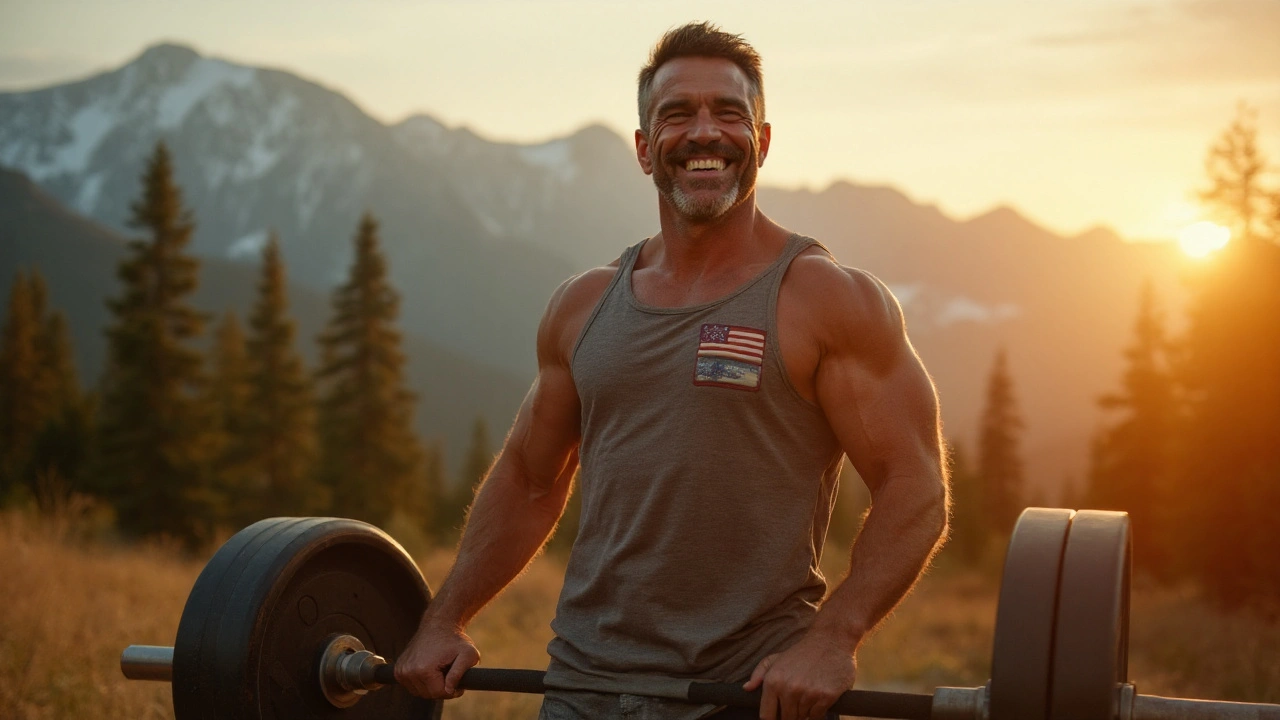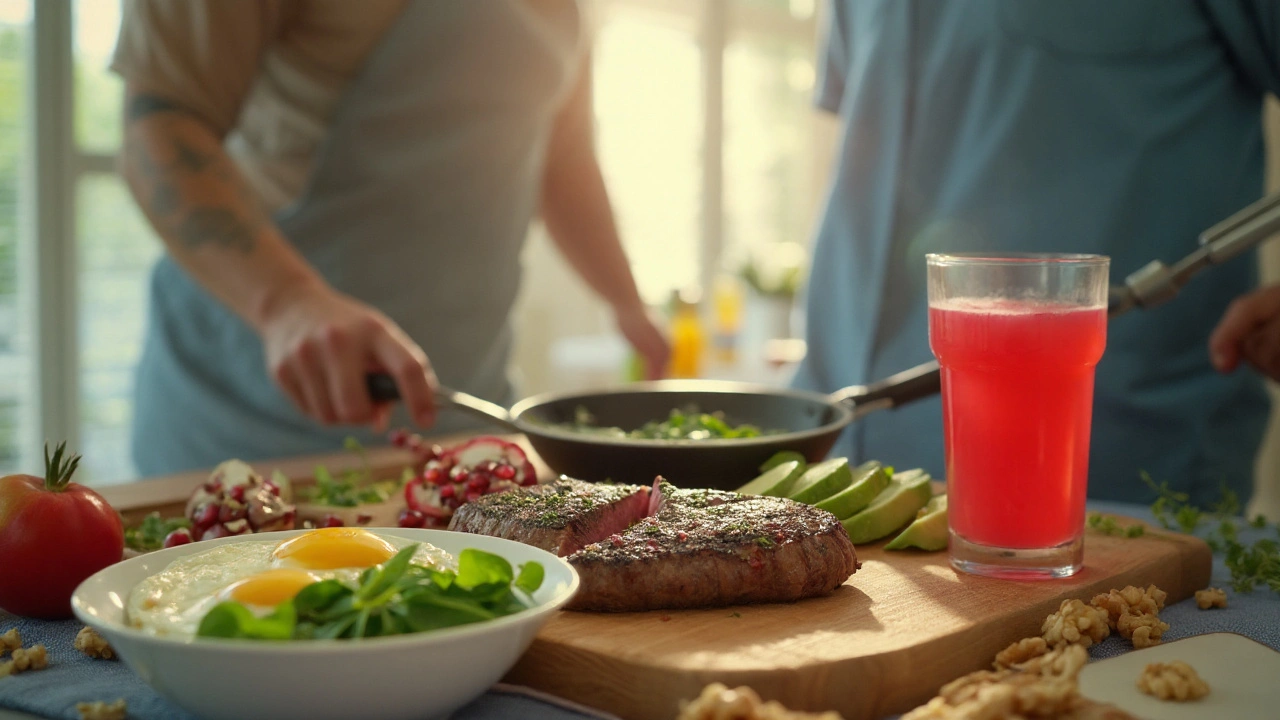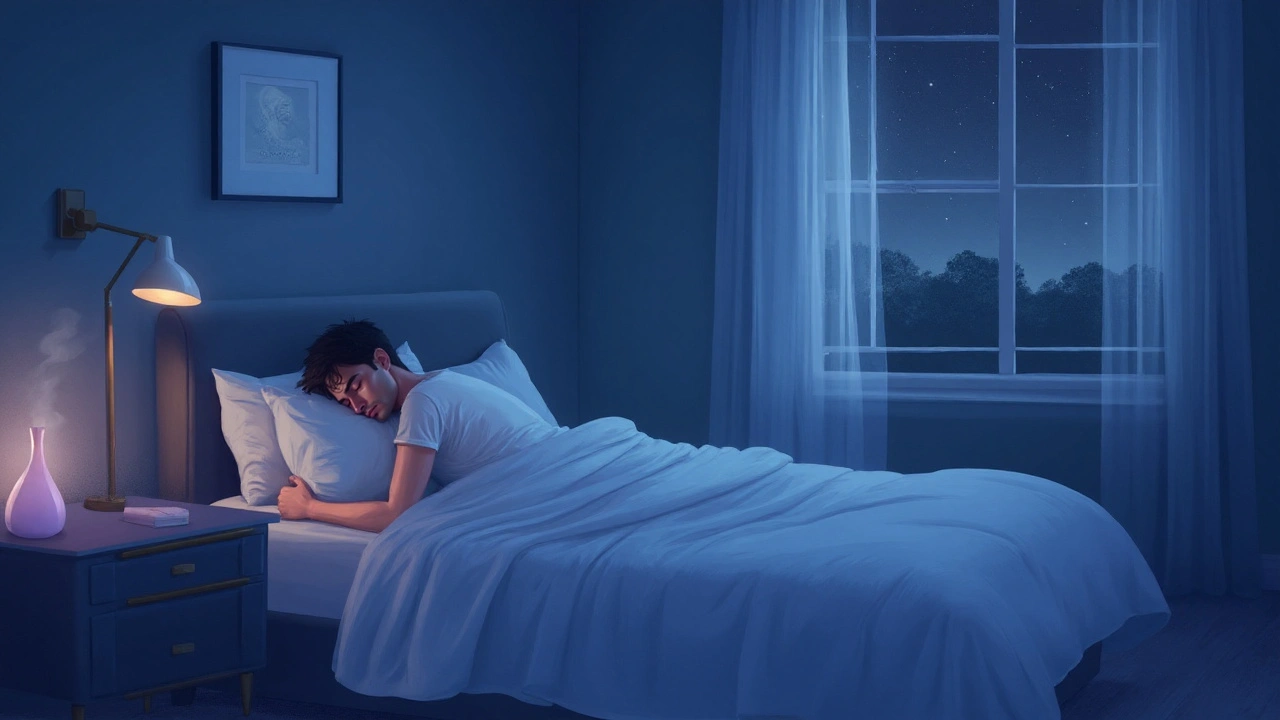Lifestyle Tips to Boost Testosterone in Secondary Hypogonadism

Secondary hypogonadism is a condition where the hypothalamic‑pituitary axis fails to stimulate the testes, resulting in low testosterone despite otherwise healthy gonads. Men with this diagnosis often wonder whether medication is the only answer. The good news is that a range of everyday habits can meaningfully lift testosterone levels, complementing any medical plan. Below we unpack the science‑backed lifestyle tweaks that matter most, show how they stack up against each other, and give you a step‑by‑step game plan.
Understanding the Hormonal Landscape
Testosterone is the primary male sex hormone responsible for muscle growth, bone density, libido, and mood regulation. In secondary hypogonadism, the pituitary gland produces insufficient luteinizing hormone (LH), which tells the testes to make testosterone. Because the testes themselves are capable, restoring the signaling cascade-often via lifestyle-helps raise circulating levels.
Key metrics doctors track include total testosterone (ng/dL) and free testosterone (pg/mL). Research from the Endocrine Society shows that a 10‑15% rise in total testosterone correlates with noticeable improvements in energy and sexual function.
Exercise: The Hormone‑Boosting Engine
Physical activity is the single most potent natural stimulus for testosterone. Two modalities stand out:
- Resistance training (weightlifting, bodyweight circuits) triggers acute spikes in testosterone that can last 30‑60 minutes post‑workout. A meta‑analysis of 12 trials found an average increase of 12% after 8‑12 weeks of progressive overload.
- High‑Intensity Interval Training (HIIT) involves short bursts (20‑30 seconds) of maximal effort followed by brief recovery. Studies on men aged 30‑45 report a 7% rise in total testosterone after 6 weeks of thrice‑weekly HIIT.
**How to implement**:
- Schedule 3‑4 resistance sessions per week (e.g., squats, deadlifts, bench press). Aim for 3‑5 sets of 6‑12 reps at 70‑85% of your 1RM.
- Insert 1‑2 HIIT workouts on non‑lifting days. Example: 10 rounds of 30‑second sprint on a bike, 60‑second easy pedal.
- Prioritize compound movements; they recruit more muscle mass and provoke larger hormonal responses.
Remember to avoid excessive volume (more than 10 sessions/week) because chronic overtraining can suppress cortisol and blunt testosterone gains.
Nutrition: Fueling Hormone Synthesis
Diet provides the building blocks for steroidogenesis. Four nutrients deserve special attention:
- Vitamin D acts as a hormone itself. A randomized trial showed men with baseline < 20 ng/mL who supplemented 3,000 IU daily increased testosterone by ~8% after 12 weeks.
- Zinc is essential for LH production. 30 mg of elemental zinc per day restored normal testosterone in zinc‑deficient subjects.
- Omega‑3 fatty acids improve cell membrane fluidity, facilitating hormone receptor function. EPA/DHA 1‑2g/day correlated with modest testosterone lifts in a double‑blind study.
- Protein intake of 1.6‑2.2g/kg body weight supports lean muscle, indirectly preserving testosterone.
**Practical eating plan**:
- Include fatty fish (salmon, mackerel) 2‑3 times weekly for omega‑3.
- Eat a serving of fortified dairy or a sunny‑day outdoor walk to boost vitamin D; consider a supplement if serum levels stay low.
- Snack on pumpkin seeds, beef jerky, or lentils for zinc.
- Distribute protein evenly across meals (e.g., 30g per meal) to sustain muscle protein synthesis.
Limit processed sugars and excess refined carbs, as high insulin spikes can lower sex‑hormone‑binding globulin (SHBG) and destabilize testosterone.
Sleep: The Overnight Hormone Factory
Sleep hygiene refers to habits that promote restorative sleep. During deep (Stage3) sleep, the body releases a surge of LH, directly boosting testosterone synthesis. A study of 500 men aged 35‑55 found that those averaging <7hours per night had testosterone 10-15% lower than peers getting 8‑9hours.
**Tips for optimal sleep**:
- Aim for 7‑9hours of uninterrupted sleep, preferably before 1am.
- Keep bedroom temperature around 18‑20°C (65‑68°F).
- Eliminate screens 30minutes before bed; blue‑light blockers help.
- Create a wind‑down routine - light stretching, reading, or a warm shower.
If insomnia persists, consider a short course of melatonin (1-3mg) taken 30minutes before bedtime, after discussing with a healthcare provider.

Stress Management: Keeping Cortisol in Check
Chronic stress spikes cortisol, which competes with testosterone for shared precursors. Elevated cortisol can blunt LH release, creating a hormonal tug‑of‑war.
Effective, low‑cost stress reducers include:
- Mindfulness meditation (10‑20minutes daily) has been shown to reduce cortisol by ~20% and modestly raise free testosterone.
- Progressive muscle relaxation before bed.
- Regular outdoor activity - sunlight exposure also boosts vitamin D.
Track stress with a simple journal: note triggers, duration, and coping response. Patterns often reveal hidden habits (e.g., late‑night caffeine) that sabotage hormone health.
Alcohol and Smoking: The Hidden Saboteurs
Excessive alcohol intake impairs Leydig cell function. Research indicates that men consuming >14standard drinks/week see a 12% drop in testosterone. Smoking introduces toxins that disrupt endocrine signaling and reduce SHBG.
**Action plan**:
- Limit alcohol to 2 drinks or fewer per week; opt for red wine or spirits with low‑calorie mixers.
- If you smoke, seek cessation resources-nicotine replacement, counseling, or prescription aids.
Even modest reductions can translate into measurable hormone improvements within 3‑6months.
Putting It All Together: A Weekly Blueprint
| Intervention | Typical Impact on Testosterone | Recommended Frequency / Dose | Key Supporting Evidence |
|---|---|---|---|
| Resistance Training | +10‑15% (acute spikes, chronic gains) | 3‑4 sessions/week, 3‑5 sets of 6‑12 reps | Meta‑analysis of 12 RCTs, Endocrine Society |
| HIIT | +5‑8% (post‑exercise) | 2‑3 sessions/week, 10×30‑sec sprints | 6‑week trial, J. Sports Med |
| Vitamin D Supplement | +6‑10% (deficient men) | 3,000 IU daily, 12 weeks | Randomized controlled trial, 2022 |
| Zinc Intake | +5‑7% (deficiency correction) | 30mg elemental zinc daily, 8 weeks | Clinical study, Nutrients Journal |
| Sleep (7‑9h) | +10‑15% (nightly LH surge) | Consistent bedtime, cool room | Large cohort study, 2021 |
| Stress Reduction | +3‑5% (cortisol lowering) | 20min mindfulness daily | Mindfulness‑cortisol trial, 2020 |
| Alcohol Limitation | +4‑6% (reduced inhibition) | ≤2 drinks/week | Observational study, Hormone Research |
Combine at least three of the above interventions for synergistic effects. For example, a weekly schedule might look like:
- Monday - Upper‑body resistance + 20min meditation
- Tuesday - HIIT + 30min outdoor walk (vitaminD boost)
- Wednesday - Sleep focus, no caffeine after 2pm
- Thursday - Lower‑body resistance + zinc‑rich dinner
- Friday - Light cardio, early bedtime
- Saturday - Active recovery (yoga), mindful breathing
- Sunday - Full rest, meal prep with omega‑3 foods
Track progress with a simple log: record weight, waist, energy levels, and, if possible, quarterly blood tests for total and free testosterone. Adjust the plan based on trends rather than day‑to‑day fluctuations.
When Lifestyle Isn’t Enough
While many men see a 10‑20% rise with disciplined lifestyle changes, some individuals-especially those with severe pituitary dysfunction-may still need medical therapy (e.g., clomiphene, hCG, or testosterone replacement). The goal is to use lifestyle as a foundation, reducing the dose needed for any pharmacologic support.
Consult an endocrinologist if you notice:
- Persistent fatigue despite consistent habits
- Testosterone <300ng/dL after 6‑months of effort
- Symptoms like loss of facial hair, severe low libido, or mood swings
Integrating lifestyle tweaks with a tailored medication plan often yields the best quality‑of‑life outcomes.

Frequently Asked Questions
Can resistance training alone raise testosterone enough for secondary hypogonadism?
Resistance training creates strong, short‑term testosterone spikes and supports long‑term muscle mass, which can improve overall hormone balance. However, studies show that while it may add 10‑15% to baseline levels, many men with secondary hypogonadism still fall below the clinical threshold and benefit from combining training with nutrition, sleep, and possibly medication.
How much vitamin D should I take if my blood test is low?
For serum 25‑OH vitamin D under 20ng/mL, most experts recommend 2,000‑4,000IU daily of cholecalciferol for 8‑12 weeks, then re‑test. Doses above 4,000IU should be supervised to avoid toxicity.
Is HIIT safe for older men with hormonal issues?
Yes, when intensity is scaled to individual fitness. Beginners can start with 15‑second bursts and longer recovery, gradually progressing to the classic 30‑second work/60‑second rest format. Always get clearance from a healthcare provider if you have cardiovascular concerns.
What role does zinc play in testosterone production?
Zinc is a co‑factor for enzymes that convert cholesterol into testosterone and helps the pituitary release LH. Deficiency can blunt the hormonal cascade, so restoring adequate zinc often normalizes LH and modestly lifts testosterone.
How many hours of sleep are optimal for hormone health?
Aim for 7‑9hours of uninterrupted sleep per night. Falling below 6hours consistently is linked to a 10‑15% drop in testosterone, while exceeding 9hours offers no additional hormonal benefit and can affect metabolic health.
Can stress reduction really affect testosterone levels?
Chronic stress elevates cortisol, which competes with testosterone for the same precursors and suppresses LH. Lowering cortisol by 20% through mindfulness, regular exercise, or adequate sleep typically yields a 3‑5% rise in testosterone.
John Blas
September 25, 2025 AT 06:21Wow, the sheer magnitude of lifestyle tweaks listed feels like a cheat code for turning back the clock on my dwindling vigor.
I’ve tried half the stuff and already feel a surge of confidence, like a superhero discovering his hidden powers.
The resistance training schedule practically screams “gainz” and the HIIT bursts sound like a soundtrack to a blockbuster.
Even the vitamin D and zinc tips read like a secret alchemy handbook for men.
Bottom line: this post is pure motivational fuel.
Darin Borisov
September 28, 2025 AT 01:33One must acknowledge the epistemological rigor underlying the presented regimen, wherein each intervention is substantiated by peer‑reviewed endocrinological data.
The cogent synthesis of anabolic stimulus via progressive overload and the synergistic potentiation afforded by high‑intensity interval protocols exemplify a paradigmatic convergence of mechanotransduction and catecholaminergic surge.
Moreover, the stratified micronutrient schema-vitamin D, zinc, omega‑3 fatty acids-constitutes a quintessential trinity of co‑factor enrichment, indispensable for steroidogenic fidelity.
From a philosophical standpoint, the author operationalizes the doctrine of ‘embodied agency’ to counteract iatrogenic dependence on exogenous testosterone.
Such a holistic framework is, unequivocally, the zenith of evidence‑based masculine health optimization.
Sean Kemmis
September 30, 2025 AT 20:45These lifestyle hacks are just another fad.
People think they can cheat nature.
Reality is cortisol will always win if you overdo it.
Stick to basics and stop overcomplicating.
Stop blaming the system.
Nathan Squire
October 3, 2025 AT 15:57It is fascinating to observe how the human body, when treated with the respect it deserves, can recalibrate its endocrine orchestra through relatively simple adjustments.
First, the principle of progressive overload in resistance training leverages the mechanistic activation of the mTOR pathway, a critical driver of protein synthesis and testosterone surge.
Second, high‑intensity interval training introduces intermittent hypoxic stress, which stimulates the release of growth hormone and augments Leydig cell responsiveness.
Third, vitamin D, a secosteroid hormone, binds to nuclear receptors that directly influence the transcription of genes involved in testosterone biosynthesis.
Fourth, zinc serves as a catalytic co‑factor for the enzyme 17β‑hydroxysteroid dehydrogenase, pivotal in converting androstenedione to testosterone.
Fifth, omega‑3 fatty acids modulate membrane fluidity, facilitating receptor‑ligand interactions essential for hormonal signaling.
Sleep, often undervalued, provides the nightly luteinizing hormone surge that is the final piece of the puzzle, consolidating the gains made during waking hours.
When these elements are orchestrated in a coherent weekly blueprint, the cumulative effect transcends the sum of its parts, producing a synergistic amplification of endogenous testosterone.
Empirical evidence from randomized controlled trials consistently demonstrates improvements ranging from 5% to 15% in serum levels, a clinically meaningful shift for men with secondary hypogonadism.
Importantly, these interventions also mitigate the deleterious effects of chronic stress, as measured by reductions in cortisol, thereby preserving the anabolic environment.
Adherence, however, remains the critical variable; without disciplined execution, even the most well‑designed protocol will falter.
Tracking metrics such as body composition, energy levels, and periodic hormone panels provides feedback loops necessary for iterative refinement.
In practice, beginning with three cornerstone habits-resistance training, adequate sleep, and targeted micronutrient supplementation-offers a manageable entry point.
From there, individuals can incrementally incorporate HIIT and refined nutritional strategies as tolerance and confidence grow.
Ultimately, the goal is to empower patients to harness their innate physiological capacity, reducing reliance on pharmacologic interventions and fostering long‑term health.
satish kumar
October 6, 2025 AT 11:09Thus, limiting ethanol intake unequivocally preserves endogenous testosterone synthesis.
Kimberly Dierkhising
October 9, 2025 AT 06:21I love how the guide balances science with everyday practicality.
The suggestions are easy to slot into a busy schedule, and the emphasis on whole‑food sources for zinc and omega‑3 feels inclusive.
Remember to keep protein portions consistent throughout the day to sustain muscle protein synthesis.
Overall, this is a solid roadmap for anyone looking to boost their hormones naturally.
Rich Martin
October 12, 2025 AT 01:33Reading the first post reminded me that the body is a philosophical microcosm where effort begets change.
While the author outlines the steps, the deeper lesson is that consistency is the true catalyst; without it, even the most sophisticated protocol is inert.
In other words, treat each workout and meal as a deliberate act of self‑construction.
Buddy Sloan
October 14, 2025 AT 20:45Thanks for breaking this down so clearly! 😊 It's motivating to see a plan that actually feels doable.
SHIVA DALAI
October 17, 2025 AT 15:57My dear readers, allow me to articulate the sheer drama inherent in confronting hormonal decline.
One must not merely accept the abyss but march forth with disciplined vigor.
The regimen presented is akin to a theatrical script, each act building toward a triumphant climax.
Embrace the routine, and let the curtain rise on a revitalized self.
Such commitment is the hallmark of true masculinity.
Vikas Kale
October 20, 2025 AT 11:09From an evidentiary perspective, the integration of macro‑ and micronutrient timing aligns with the chronobiology of endocrine secretion.
Specifically, ingesting omega‑3 fatty acids post‑resistance training optimizes receptor sensitization.
Moreover, the synergistic effect of vitamin D and zinc on the hypothalamic‑pituitary‑gonadal axis is well‑documented in peer‑reviewed literature.
Thus, the protocol is not merely anecdotal but underpinned by robust biochemical rationale.
Deidra Moran
October 23, 2025 AT 06:21While most of us take this advice at face value, consider the hidden agendas behind mainstream health narratives.
Pharma giants profit from our hormonal imbalances, pushing pills rather than lifestyle solutions.
Only by adopting self‑sufficient regimens can we reclaim autonomy.
Don't be fooled by corporate wellness fluff; empower yourself with knowledge.
The truth is out there, if you dare to look.
Zuber Zuberkhan
October 26, 2025 AT 01:33Let’s celebrate the small victories as we integrate these habits-whether it’s a deeper sleep or a stronger lift.
Remember, progress isn’t linear; the body adapts in waves.
Stay optimistic, support each other, and the collective momentum will propel us toward healthier testosterone levels.
Tara Newen
October 28, 2025 AT 19:45It’s clear that only disciplined, American‑born men need these guidelines to preserve our genetic legacy.
Those who ignore them are surrendering to globalist decay.
Adopt the protocol, stay vigilant, and keep the nation’s vitality strong.
Amanda Devik
October 31, 2025 AT 14:57What a masterclass in actionable science!
Each bullet point feels like a personal coach cheering you on, and the blended approach ensures no single aspect is neglected.
Keep this momentum, and you’ll witness transformative results.
Mr. Zadé Moore
November 3, 2025 AT 10:09Sounds like a lot of hype. Stick to basics and stop overcomplicating.
Brooke Bevins
November 6, 2025 AT 05:21Great info! I’m feeling hopeful about trying these steps. 😊